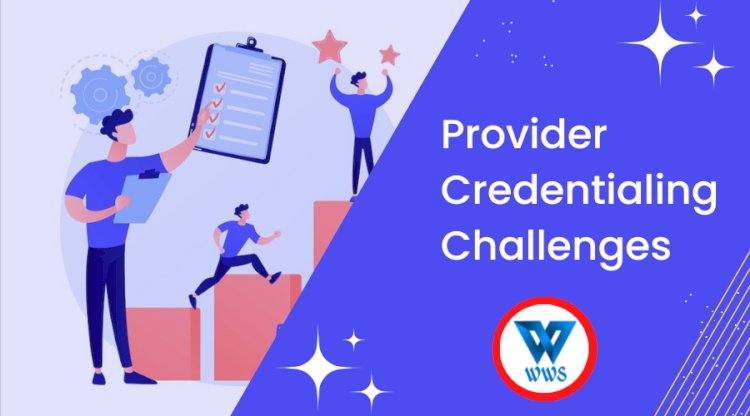Provider Credentialing challenges
Credentialing provider is a necessary part of the healthcare industry, but it can be challenging to do correctly. There are many different regulations that need to be met, and platform changes can throw a wrench in your plans.

Here are some common problems with credentialing providers that we address at WWS:
Accessing Up-to-Date Information.
It is important to have access to the most current information to avoid credentialing delays and denials.
Meeting Deadlines.
Meeting deadlines is critical to the success of Credentialing. If you miss a deadline, whether it is for documentation or payment, it could result in providers being ineligible for care. In order to meet deadlines and avoid losing providers from your network, consider these tips:
- Communicate regularly about applications and progress so that everyone knows where things stand at any given moment (and any delays won't come as a surprise).
- Make sure your team has access to all necessary resources such as templates and training materials so they can quickly get up-to-speed on new requirements without having to wait on IT support or other departments within your organization.
Inability to Change Platforms.
The ability to deploy a standardized platform across multiple providers is critical.
As the healthcare market continues to grow and evolve, providers are increasingly looking for ways to streamline operations while maintaining compliance with industry regulations. This requires the ability to collect and report data in a consistent manner across all platforms.
Because of these challenges, many organizations have begun adopting cloud-based systems that allow them to manage their credentialing processes from any location or device on their network. These systems offer many benefits: they’re scalable, highly secure, and compliant with industry standards; they provide flexibility and eliminate any need for additional IT staff; they allow you to easily customize workflow templates for each provider type (physicians, hospitals, and others); plus you can access your data from anywhere at any time—all while controlling costs by eliminating costly hardware purchases!
Meeting Compliance with State Regulations.
The challenge of meeting compliance with state regulations extends beyond just having a credentialing program in place. Each state has its own regulations and requirements, which can be difficult to navigate. For example, in some states, there are requirements that providers must have a certain number of employees who have completed specific training courses or programs within the past three years. Other states require providers to have entire departments dedicated to credentialing specific types of clients (e.g., veterans).
In order to meet these challenges, you may need help from an outside resource like us here at WWWS. We know how important it is for your organization's success that your team members are properly trained and compliant with state laws; we'll work with you so that all of their needs are met without any hassle on your part!
Ensuring Privacy and Security.
Data privacy, data protection, and data security are core principles of the GDPR. These principles must be adhered to by those who collect and process personal information about individuals within the EEA (European Economic Area) or Switzerland. The GDPR requires that you take appropriate steps to ensure that your staff is aware of their responsibilities in relation to personal data processing. This includes ensuring that:
- Data is encrypted when being transmitted over insecure networks such as public WiFi connections.
- Data is stored securely on encrypted devices or servers; only those who need access should have it e.g., using password-protected folders on a laptop could prevent others from accessing sensitive information if the device was stolen.* Data is only accessed by those with permission or an official purpose (e.g., a doctor treating a patient).* Data should not be shared outside your organization unless strictly necessary for business purposes such as marketing campaigns, customer support, etc.* When no longer needed, all personal data should be deleted immediately
Medical credentialing can be a challenge but there are solutions available.
There are solutions available to help with medical credentialing. First, it should be easy for everyone to use. The solution should also be scalable, which means that as the number of users increases, it can handle more without slowing down or crashing. Finally, it should be cost-effective so that the organization does not spend too much on this important task.
Conclusion
Medical credentialing is a complex process, but it is necessary for healthcare providers to access patient information and records. Credentialing can be a time-consuming and challenging process. However, there are ways to minimize the challenge by working with a third-party provider who specializes in helping healthcare providers navigate this crucial process.

 Martin Jacob
Martin Jacob 















